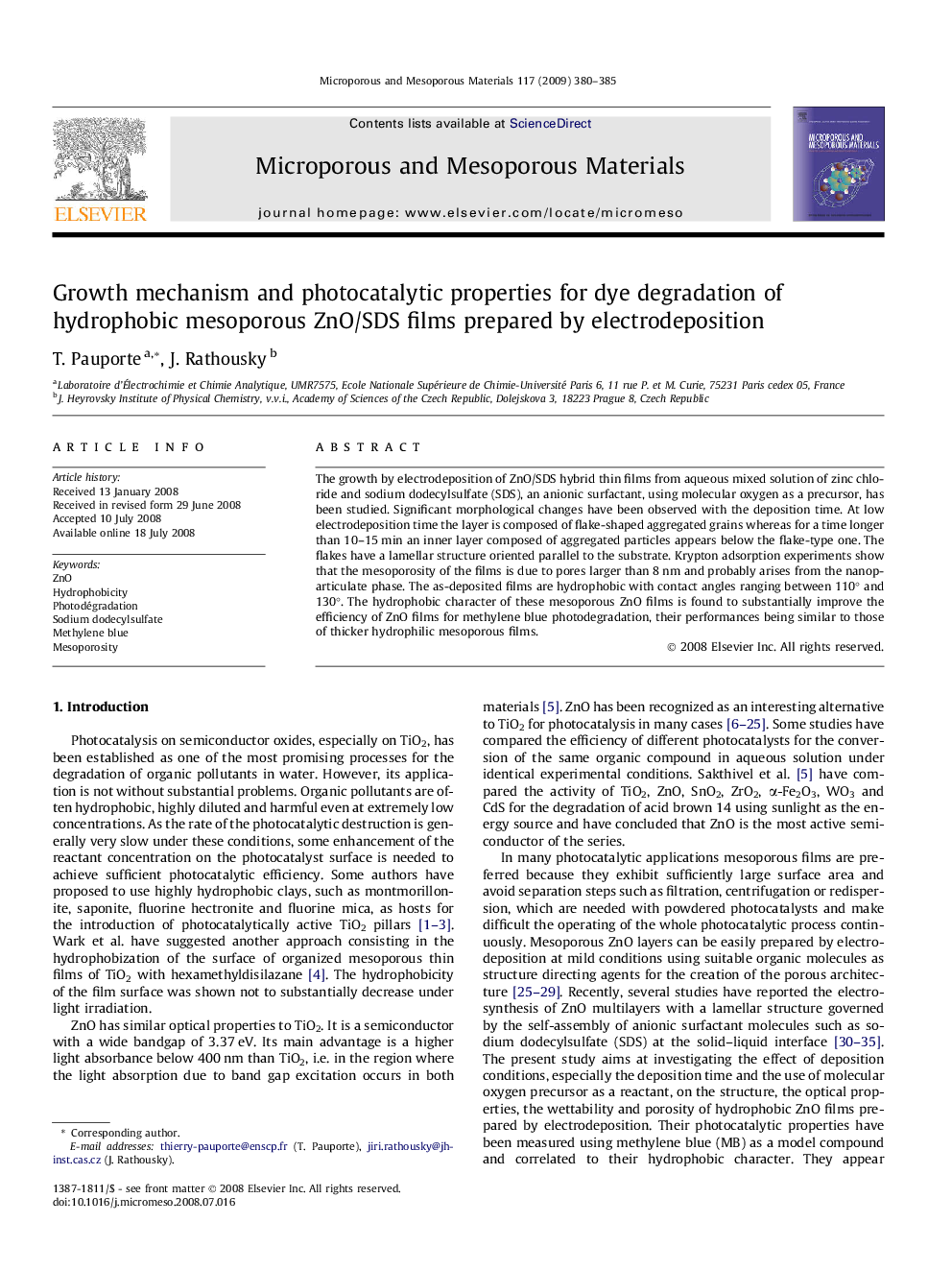| Article ID | Journal | Published Year | Pages | File Type |
|---|---|---|---|---|
| 75352 | Microporous and Mesoporous Materials | 2009 | 6 Pages |
The growth by electrodeposition of ZnO/SDS hybrid thin films from aqueous mixed solution of zinc chloride and sodium dodecylsulfate (SDS), an anionic surfactant, using molecular oxygen as a precursor, has been studied. Significant morphological changes have been observed with the deposition time. At low electrodeposition time the layer is composed of flake-shaped aggregated grains whereas for a time longer than 10–15 min an inner layer composed of aggregated particles appears below the flake-type one. The flakes have a lamellar structure oriented parallel to the substrate. Krypton adsorption experiments show that the mesoporosity of the films is due to pores larger than 8 nm and probably arises from the nanoparticulate phase. The as-deposited films are hydrophobic with contact angles ranging between 110° and 130°. The hydrophobic character of these mesoporous ZnO films is found to substantially improve the efficiency of ZnO films for methylene blue photodegradation, their performances being similar to those of thicker hydrophilic mesoporous films.
